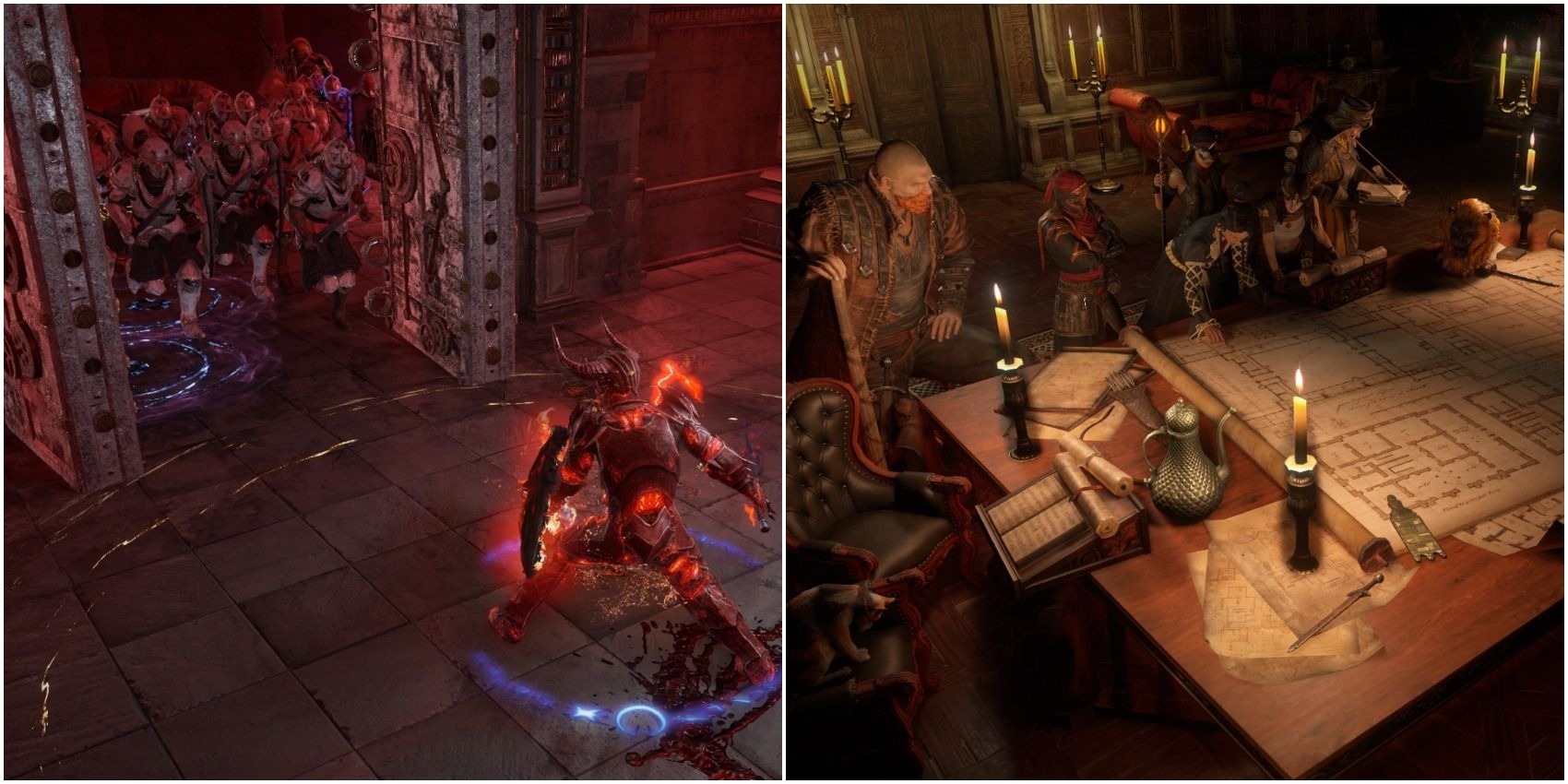
Path of Exile's Heist league has introduced an entirely new ecosystem to the game's progression and endgame systems. Nine NPCs, hundreds of new items, Replica Uniques, and Heists themselves have added a breadth of content to Path of Exile that hasn't been seen in recent leagues.
RELATED: Path Of Exile: Every Ascendancy Ranked From Worst To Best
That said, this is easily one of the most confusing leagues for newer and even experienced players to dive into. Gearing Rogues and understanding Grand Heists can be confusing to learn. Fortunately, they are much less intimidating than they appear. From understanding Heist's mechanics to general tips, here is a complete guide to Path of Exile's Heist missions introduced in Heist league.
Updated January 26th, 2021 by Charles Burgar: Heist content has been added to Path of Exile's core content, meaning it is available in Standard and all future leagues. Grinding Gear Games, the developers of Path of Exile, have made some slight changes to Heists to reflect this change. This article has been updated to reflect these changes. A dedicated section for Rogues has also been added, hopefully making the unlock process for them much easier.
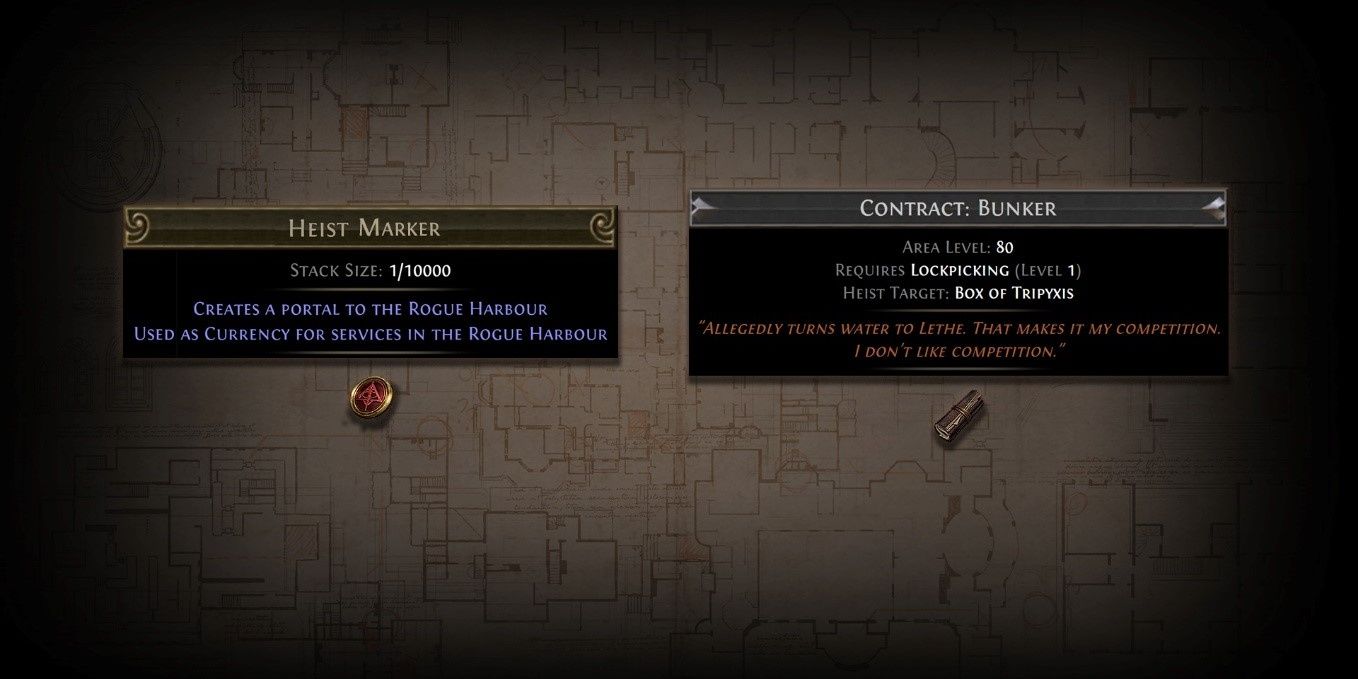
Every enemy in Path of Exile has a chance to drop Rogue Markers, special coins that will open a portal to the Rogue Harbour. Players can also find Contracts from slain foes and Smuggler's Caches, which can be used in the Rogue Harbour to initiate Heists.
Contracts act similar to Maps, each having an area level that denotes monster strength. These missions will also note what skills are required, the tileset it takes place in, and list any potential modifiers if the Contract is magic or rare in rarity. As with Maps, players can use currency items to craft modifiers onto these Contracts, increasing their rewards but making them much harder. Contracts can be earned as early as Act 6 and drop in virtually every area. If players get tired of Mapping or leveling, completing Contracts on the side is a great change of pace that gives great rewards.
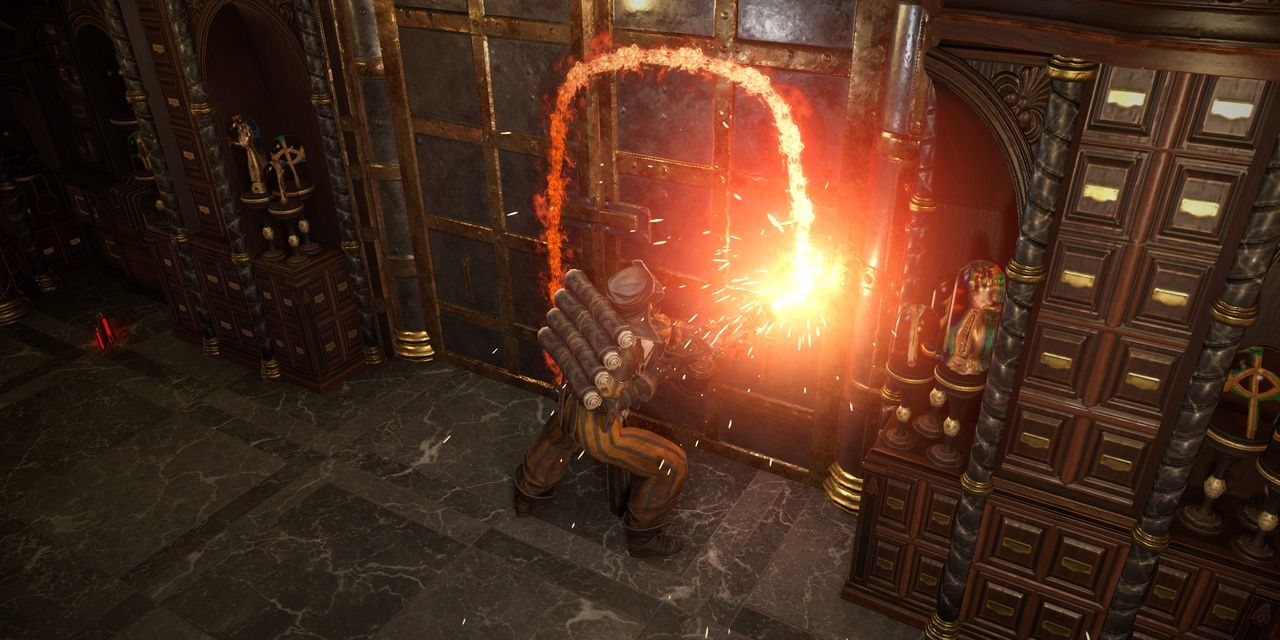
Each Heist players embark on will require Rogues proficient in certain Jobs. There are nine Jobs in Heist: Agility, Brute Force, Deception, Demolition, Engineering, Lockpicking, Perception, Counter-Thaumaturgy, and Trap Disarmament.
Jobs aren't just an arbitrary prerequisite to running Heists, though. The type of Job attached to a mission will determine the rewards that lie within. The rewards are the following:
- Agility: Armor, Currency, Essences, Fossils, Harbinger
- Brute Force: Weapons and Uniques
- Counter-Thaumaturgy: Jewelry and Skill Gems
- Deception: Armor and Divination Cards
- Demolition: Generic Loot, Blight, Metamorph, Delirium
- Engineering: Armor, Maps, Uniques
- Lockpicking: Currency, Fragments, Jewelry
- Perception: Divination Cards, Jewelry, Prophecies
- Trap Disarmament: Abyss, Armor, Breach, Legion, Talismans, Weapons

Rogues can be found in the Rogue Harbor, a unique hub space that can only be accessed by using a Rogue Marker. There are nine Rogues tied to Heist, each with a certain skill set and gear that they can use. Eight out of the nine Rogues are specialized to complete one or two types of Contracts.
Rogues have the following proficiencies:
- Karst: Lockpicking (5), Perception (3), Agility (2)
- Tibbs: Brute Force (5), Demolition (4)
- Isla: Engineering (5), Trap Disarmament (4)
- Tullina: Agility (5), Lockpicking (3), Trap Disarmament (2)
- Niles: Counter-Thaumaturgy (5), Deception (4)
- Nenet: Perception (5), Counter-Thaumaturgy (4)
- Vinderi: Demolition (5), Trap Disarmament (5), Engineering (2)
- Gianna: Deception (5), Counter-Thaumaturgy (3), Perception (2)
- Huck: Lockpicking (3), Brute Force (3), Demolition (3), Engineering (3)
Players will start with Karst, Tibbs, and Isla. To unlock the other six, they must complete Contracts with certain members. Unbeknownst to the player, these Rogues must be introduced in a specific order. That order is listed below.
- Karst -> Huck -> Niles -> Vinderi -> Gianna
- Tibbs -> Tullina -> Nenet
The order plays in a linear sequence. For example, Tibbs will always introduce Tullina to the player during a Contract. No one else will ever introduce Tullina to the player. Tullina will then introduce players to Nenet. Follow this sequence to maximize Rogue unlocks.
RELATED: Path Of Exile: 10 Tips For Making Currency
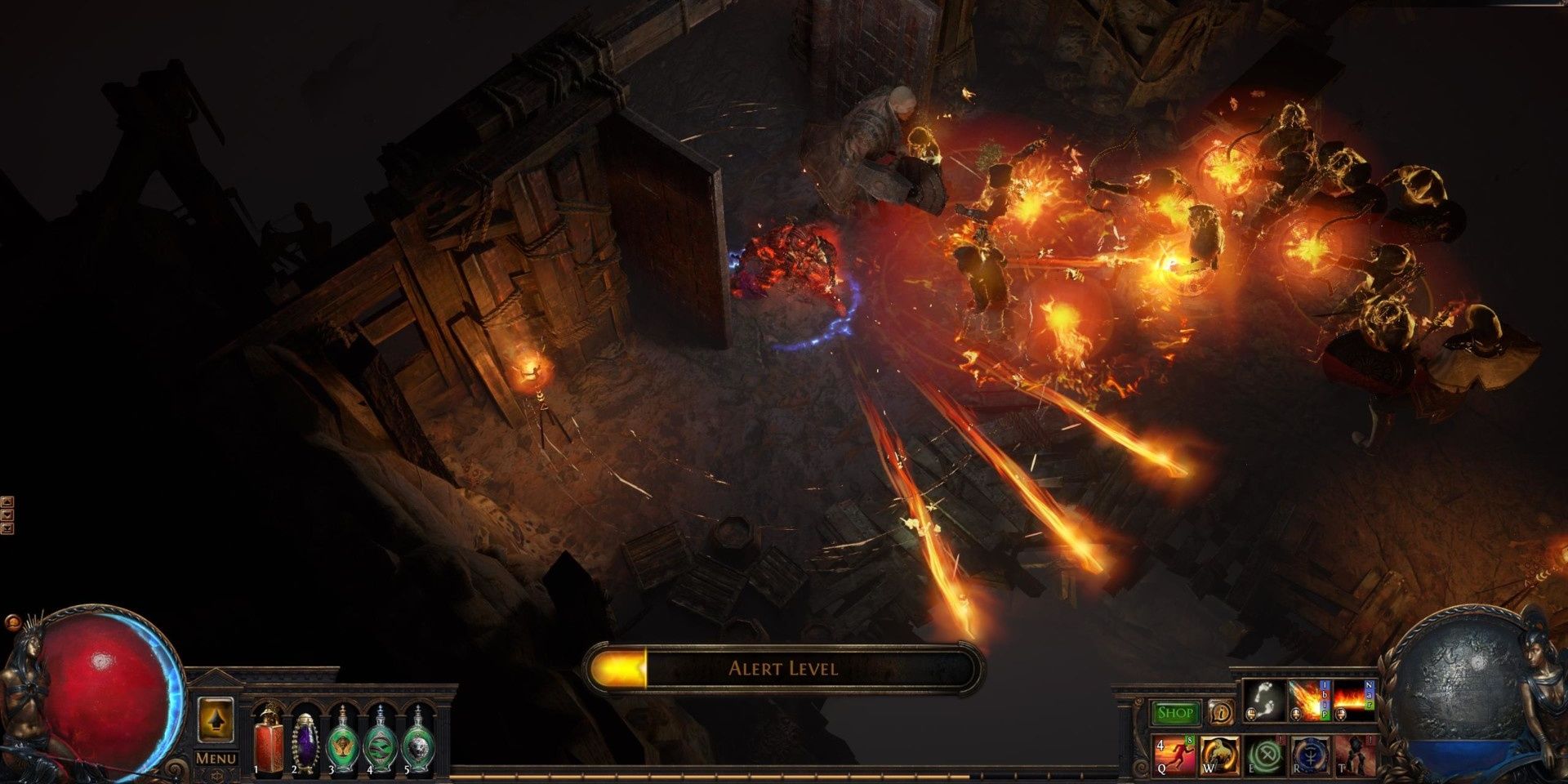
The most noticeable change from typical Path of Exile content and Heists is the alert level. This gauge will fill based on opening chests and being spotted by certain objects in the environment. Killing targets does not raise a player's Alert Level.
Loot as many objects as possible on the way to the objective, but do take note of how much chests contribute to the meter. Smaller footlocker chests that dot the level generate much less alert than the larger side room chests. Should the alert level in a Heist reach or exceed 100%, players will be given a short period to steal the objective item before it closes forever. Breaking the cabinet that contains the objective item will start the next section of a Heist.
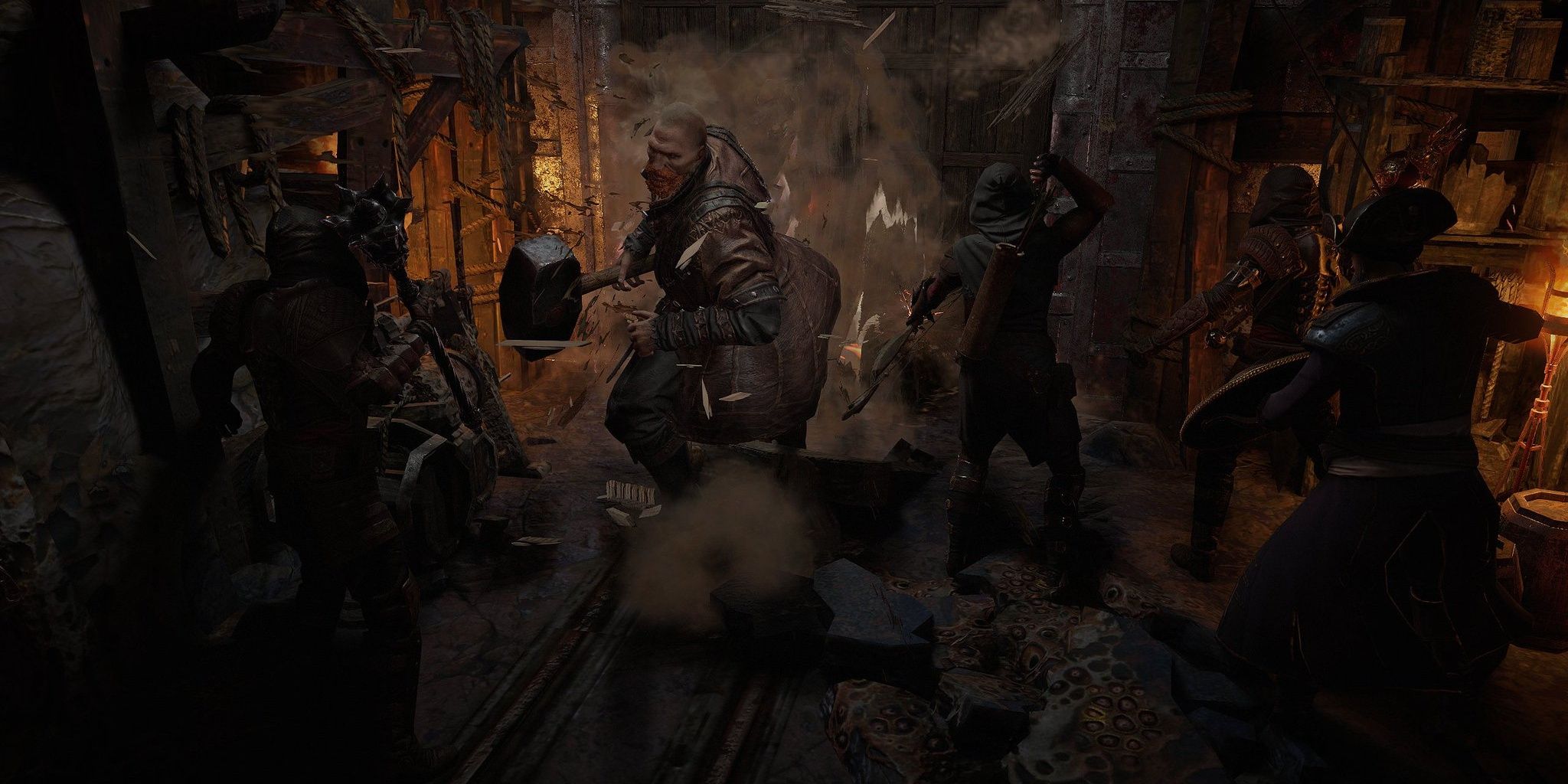
Once players have the objective item in their inventory, lockdown will begin. At this stage, enemies will spill into the level in large numbers. Players will need to backtrack to the start of the level and escape without dying. Dying during this part will result in all stolen items being left on the ground. It is highly encouraged to bring Decoy Totems, minions, or some form of aggro-control to make the chokepoint fights much more manageable as guards can easily one-shot players when they enter a new room.
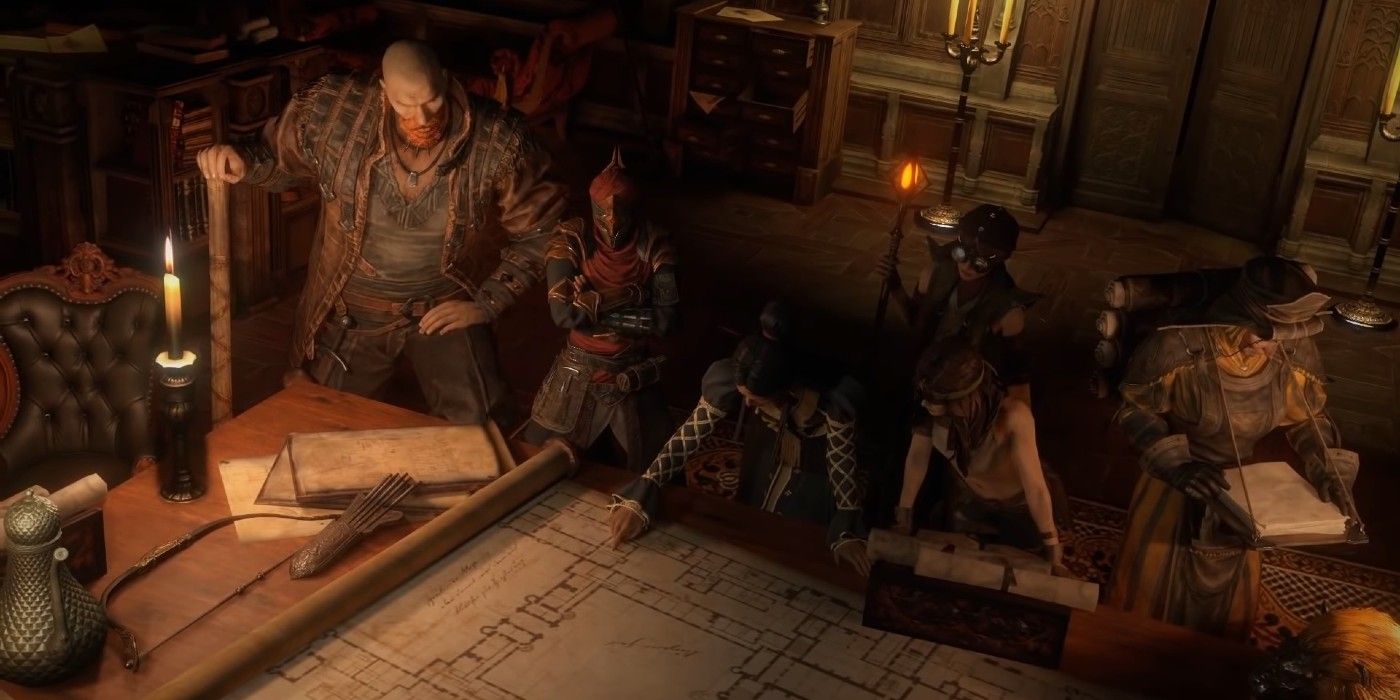
Completing normal Contracts is rewarding on its own, but players that have geared and high-level Rogues will want to complete a few Grand Heists. These are known as Blueprints in-game, which act as Contracts that require planning before they can be started.
Blueprints have multiple roles that are meant to be fulfilled by a party of Rogues. Unlike Contracts, Blueprints are made up of multiple wings that act as separate Heists. Revealing these wings costs Rogue Markers and intelligence. When everything is planned out, the player can stamp the Blueprint and start the mission. The mission itself functions the same as a Contract but with multiple levels and better end-of-mission loot. Alternate quality gems and Replica Uniques are found in Blueprints.
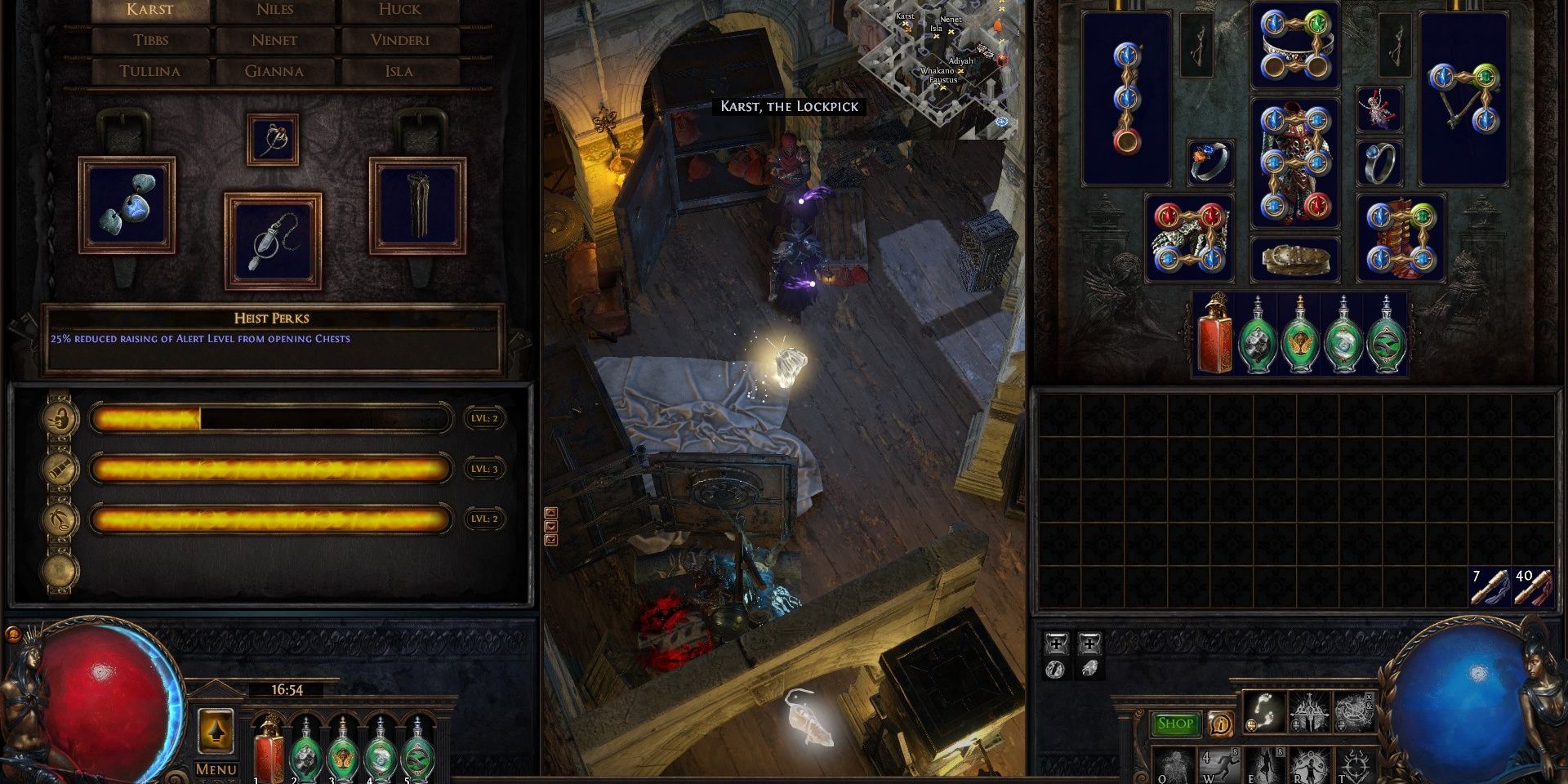
As mentioned earlier, every Rogue in Heist has an inventory that mimics the players with much fewer slots. Players can give Rogues items that grant bonuses that range from increased item drops to raising their skills beyond their maximum. As with most items in Path of Exile, these items can be upgraded using currency items such as Orbs of Alchemy. Rogue items randomly drop from Heist missions either from slain guards or chests. Gear up Rogues when possible to maximize rewards.
RELATED: The 10 Best Action-RPGs To Play If You Love Diablo
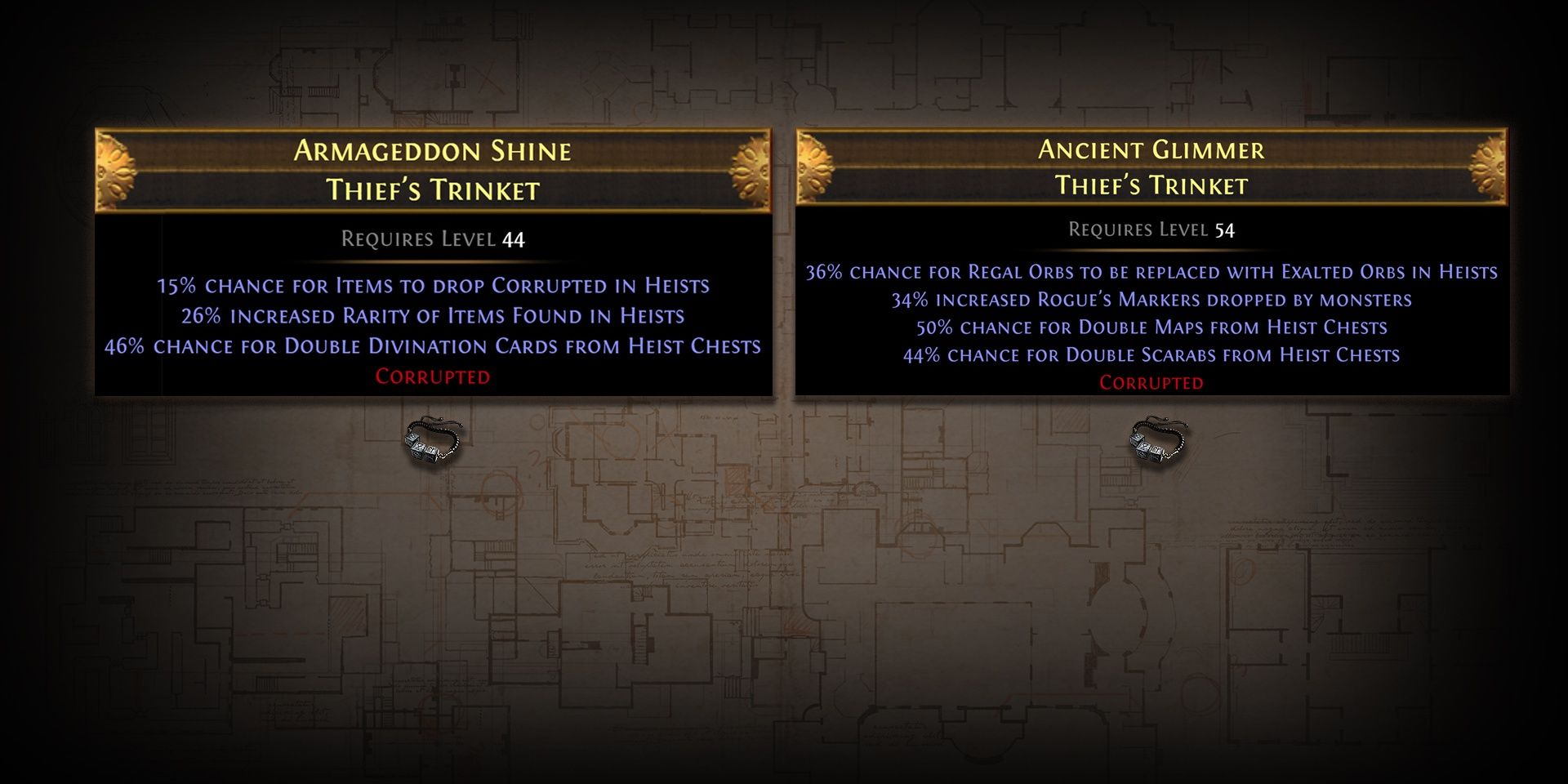
For the first time since Path of Exile's release, Grinding Gear Games has added a new inventory slot to the game. This item slot can house Trinkets, special corrupted items that alter the loot granted from Heists. These can range from increasing Rogue Marker drops to converting common currency into rarer, more coveted types.
To unlock the Trinket slot, players must find the sculpture "The Catch" from a Heist Blueprint. Players can find "The Catch" from Grand Heists located in either the Smuggler's Den or Underbelly tilesets. Trinket slots are character-bound.
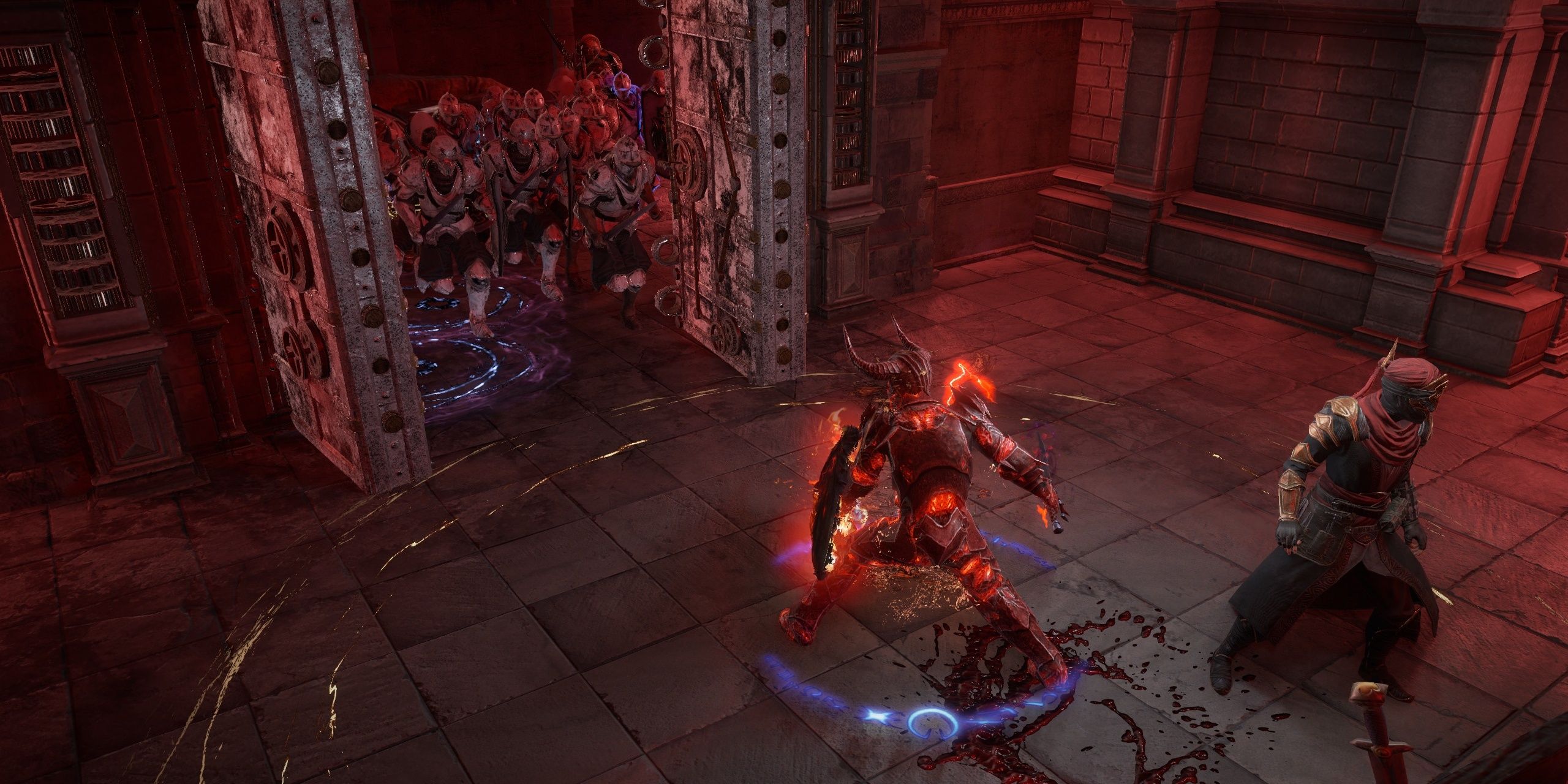
Similar to how Jobs influence rewards, so too do Heist tilesets influence the enemies within. The tilesets are Bunker, Smuggler's Den, Laboratory, Repository, Prohibited Library, Tunnels, Underbelly, Records Office, and Mansion. Most of these locations play the same, but there are a few differences with some of the enemy types. Repository, for example, has robots inside the Heist that are non-hostile until either lockdown begins or they are damaged.
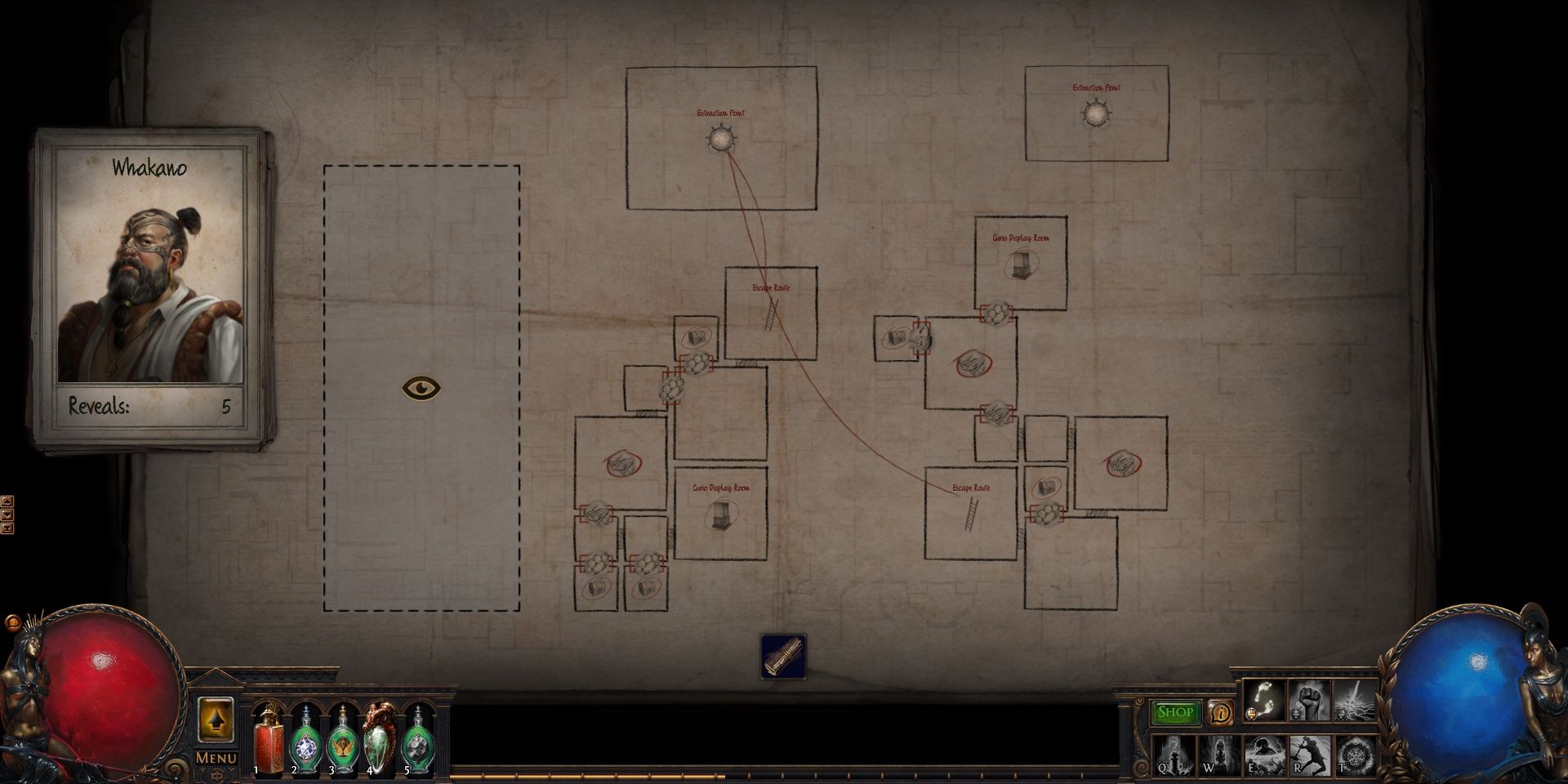
There are a few mechanics in Heist that are obscure but incredibly important. The biggest example of this is contraband gear. Players typically lose these items on death, but players that get a valuable contraband item can choose to exit the Heist by backtracking to the exit. Head to the level start to make the items persist on death, then return to the level and loot whatever remains.
Yet another unique mechanic, certain Rogues can be placed in multiple Jobs during a Blueprint. Doing so will multiply their passive perks and item effects by the number of times they've been used. For example, using Karst for three different Jobs in a Blueprint will make his chest alert reduction perk three times stronger! Put the best items on Rogues that are in multiple Jobs to reap the most rewards.
NEXT: Path of Exile: Best Ritual League Starter Builds for Echoes of the Atlas

